Backpacks have become an essential part of our daily lives,whether you’re a student, traveler, or professional, chances are you use one regularly. But have you ever wondered when and how backpacks were first invented? Why are they still so popular today, especially among college students? And what makes them so practical for everyday use? In this article, we’ll dive into the history of backpacks, from their ancient origins to the modern-day designs we all know and love.
Backpacks were invented in ancient times, but the modern backpack, as we know it today, emerged in the mid-20th century. Over time, backpacks evolved to become indispensable tools for school, travel, and outdoor activities. Their design and materials have improved, but the core idea has stayed the same: a convenient way to carry your belongings hands-free.
Think about your first backpack. Was it the one you used for school, your first hiking trip, or maybe that trusty travel bag? It’s hard to deny that backpacks have earned their place in our everyday lives. Let’s take a closer look at when and how backpacks were invented, and why they’re more than just a bag,they’re a cultural staple.
What is The History of Backpacks?
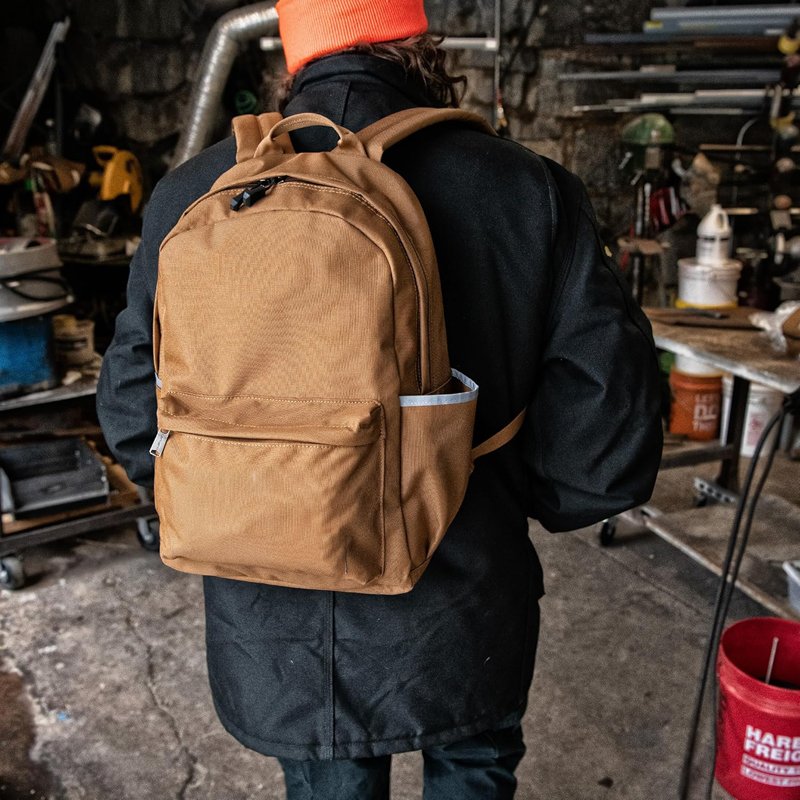
What is the Origin of the Backpack?
Backpacks, in some form, have been around for thousands of years. While they might not have resembled the backpacks we use today, the basic concept of a wearable carrying bag has existed since ancient times. Early humans would use animal skins or woven plant fibers to create simple bags that could be slung over their shoulders or tied around their waists.
The backpack’s origins stretch back to ancient civilizations that used basic bags made from animal hides or woven materials for carrying goods. Over time, this idea evolved into the multi-functional backpacks we know today.
In ancient times, the Inca Empire used woven fabrics for their version of backpacks, known as “chuspas.” These were small, often colorful bags used to carry food, tools, and other essentials. The design was simple, but functional. As trade routes expanded, different civilizations began adapting similar designs for transporting goods over long distances.
- Ancient Civilizations and Early Uses: Early backpacks were primarily used by hunters, gatherers, and travelers. The designs were simple, often made from animal pelts or woven baskets.
- Technological Advances: The industrial revolution in the 19th century led to the invention of stronger materials like canvas, making backpacks more durable for heavy loads.
Who Invented the Modern Backpack?
The modern backpack we use today was influenced by several key inventors and innovators throughout history. However, a major milestone in its evolution came in the early 20th century when designs began to incorporate features like adjustable straps and reinforced stitching for comfort and strength.
While no single inventor can claim credit for the modern backpack, key innovations in the early 20th century, including the introduction of adjustable straps and durable materials, paved the way for the backpacks we use today.
- The First Modern Backpack Designs: In the 1930s, designs from companies like JanSport and Deuter helped to create backpacks that could be used for hiking, travel, and everyday life.
- Military Influence: Backpacks used by soldiers during World War II contributed to the development of sturdy, functional designs that would later become mainstream in civilian life.
How Did Backpacks Evolve Over Time?
As time progressed, backpacks began to evolve, and so did the materials used to create them. In the 19th century, backpacks were made from canvas and leather, offering better durability than earlier versions. However, it wasn’t until the mid-20th century that backpacks became a commercial product.
Key Milestones:
- Canvas and Leather (1800s): Leather backpacks were often used by travelers and soldiers. Canvas was introduced as a lighter, more versatile material.
- 1900s: Early military-style backpacks, designed for soldiers to carry their gear, became a popular inspiration for outdoor backpacks.
- 1950s-1960s: Outdoor brands like Kelty and The North Face began creating specialized backpacks for hikers and mountaineers.
Key Milestones in Backpack Development
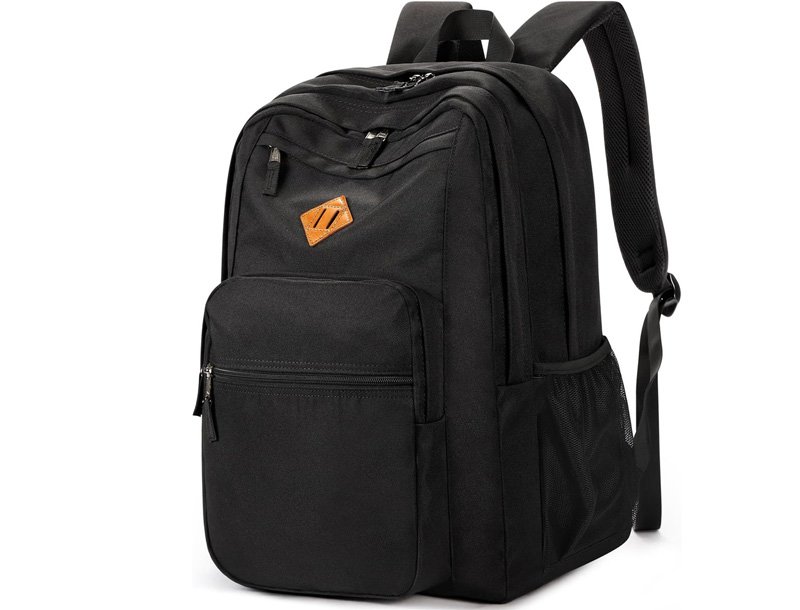
When Did Backpacks Become Popular for Travel and Hiking?
While backpacks were used by travelers and soldiers for centuries, the modern-day hiking backpack gained widespread popularity in the mid-1900s. The increase in leisure travel, as well as the rise of mountaineering as a popular sport, meant that backpacks needed to be both practical and durable.
Backpacks became widely popular for travel and outdoor activities in the 1950s and 1960s as hiking and mountaineering grew in popularity. Brands like Kelty and The North Face helped shape the modern design.
Before the 1950s, people often used trunks or suitcases for travel, but these were bulky and impractical for long journeys or rough terrains. The development of lightweight, durable materials like nylon and polyester led to backpacks being designed for specific activities like hiking and camping. The first modern hiking backpacks were born, featuring adjustable straps, padded shoulder support, and ergonomic designs to ensure comfort over long distances.
What Were the First Materials Used for Backpacks?
Early backpacks were made from basic materials such as leather, canvas, and animal skins. Over time, more durable and lightweight fabrics such as nylon and polyester were introduced, allowing for stronger, water-resistant backpacks that could withstand daily wear and outdoor conditions.
The earliest backpacks were made from leather and canvas. As technology improved, synthetic materials like nylon and polyester became popular, offering durability, lightweight qualities, and water resistance.
- Leather and Canvas: These materials were durable but heavy, making them ideal for carrying heavy loads, like camping gear.
- The Move to Synthetics: In the 1970s, backpacks started being made from synthetic fabrics, which were lighter and more resistant to water. Brands like North Face and Osprey popularized these materials for hiking and travel backpacks.
What is the Oldest Backpack Company?
The first backpack manufacturers came into existence in the early 20th century. One of the oldest and most notable companies is Deuter, founded in 1898 in Germany. Deuter revolutionized the backpack industry with their innovative designs for hiking backpacks.
Deuter, founded in 1898, is considered one of the oldest and most influential backpack companies. Their innovations in outdoor gear helped shape modern backpack design.
- Deuter’s Early Innovations: Their backpacks were used by mountaineers and soldiers and were some of the first to include features like padded straps and compartments for tools.
- Impact on the Outdoor Industry: Deuter’s designs set the standard for what modern hiking backpacks should be:durable, ergonomic, and practical for outdoor activities.
What are The Impact of Backpacks on Everyday Life
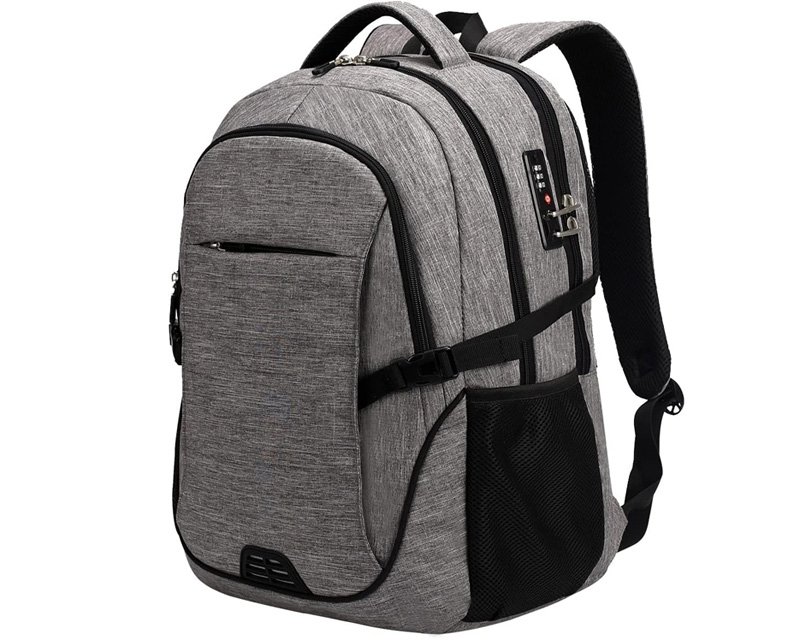
Why Are Backpacks So Popular Today?
Backpacks are everywhere,from college students carrying textbooks to professionals commuting to work. So, what makes backpacks so popular? The answer lies in their functionality, comfort, and convenience.
Backpacks are favored for their functionality, comfort, and convenience. They distribute weight evenly across your shoulders and make it easier to carry heavy loads hands-free, whether for school, work, or travel.
Let’s face it, carrying a heavy bag on one shoulder or in your hands all day can be tiring and awkward. Backpacks, on the other hand, distribute the weight evenly across your back, preventing shoulder strain and making it easier to carry more without discomfort.
For students, backpacks are a must-have. How long do school backpacks last? With proper care, a quality school backpack can last for years, providing reliable support for heavy textbooks and notebooks.
How Did Backpacks Change the Way People Carry Items?
Backpacks revolutionized the way we carry personal belongings. Unlike briefcases or shopping bags, backpacks allow for hands-free mobility, distributing weight evenly across both shoulders, making them more comfortable and less taxing on the body.
Backpacks changed the way we carry our things by offering a hands-free, ergonomic solution. With even weight distribution across both shoulders, they became more comfortable and practical than traditional bags.
- Hands-Free Convenience: The ability to carry a heavy load without using your hands has made backpacks indispensable for students, travelers, and outdoor enthusiasts.
- Ergonomics and Comfort: Modern backpacks are designed to reduce strain on the back, with features like padded straps and breathable fabrics.
Do College Kids Still Use Backpacks?
Absolutely! Backpacks remain a go to accessory for college students. In fact, many college students rely on their backpacks to carry everything from laptops and textbooks to snacks and water bottles.
Backpacks continue to be essential for college students, offering a convenient and ergonomic way to carry books, tech, and other essentials.
- Fashion and Function: College students not only use backpacks for their practicality but also as a style statement, often choosing bags with unique designs, colors, and brands.
- Longevity of School Backpacks: Many backpacks last for several years, making them a worthwhile investment for students.
What Are Small Backpacks Called?
When it comes to smaller, more compact backpacks, many people refer to them as mini backpacks or daypacks. These are great for carrying just the essentials,perfect for short trips or casual outings.
Smaller backpacks, often referred to as mini backpacks or daypacks, are designed for light use and are perfect for carrying only the essentials.
Mini backpacks have gained popularity in fashion, often used as an accessory for people who want to carry just a wallet, phone, and keys. They’re practical for a day out in the city or a quick trip to the store.
What Are the Types of Backpacks?
Backpacks come in a variety of styles and sizes, each designed for different purposes. Whether you’re looking for something to carry your schoolbooks, a rugged hiking bag, or a sleek everyday carry, there’s a backpack type that fits your needs. Let’s break down the most common types of backpacks you’ll encounter, and explore what makes each one unique.
1. School Backpacks
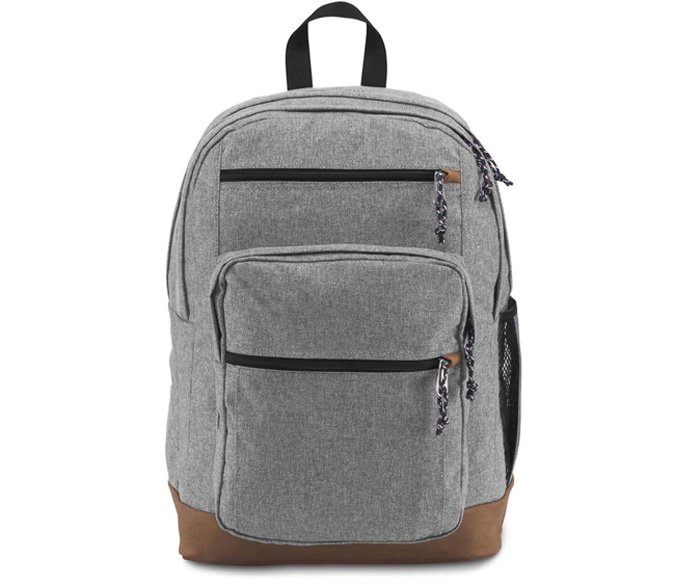
School backpacks are designed for students of all ages, from elementary school to university. They tend to be lightweight, spacious, and feature multiple compartments to help organize books, laptops, stationery, and other study essentials.
Key Features:
- Compartments: Several compartments to store books, notebooks, pens, and electronic devices.
- Padding: Cushioned shoulder straps and back panels for comfort during long school days.
- Durability: Built to withstand daily use and heavy loads.
Popular Use: Students from primary school to university use these backpacks to carry books, laptops, and other educational materials.
- Simple school backpacks with one large main compartment.
- More specialized designs for high school or college students, often featuring laptop sleeves and additional organization features.
2. Hiking Backpacks
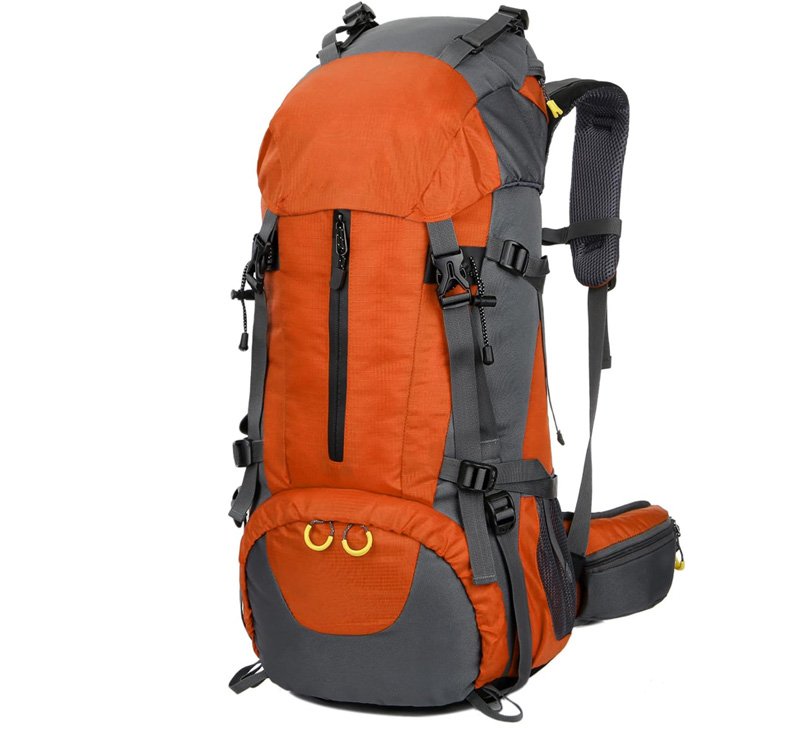
Designed specifically for outdoor activities like hiking and camping, hiking backpacks are built to carry everything needed for extended trips in the wilderness. These backpacks prioritize comfort, durability, and practical features that help adventurers carry heavy loads over long distances.
Key Features:
- Capacity: Ranges from 20L for day trips to 70L or more for multi-day treks.
- Frame: Many hiking backpacks have internal or external frames to help distribute weight evenly.
- Hydration Compatibility: Some hiking backpacks feature hydration reservoir pockets for water bladders.
- Ventilation: Breathable back panels to prevent sweating during long hikes.
Popular Use: Ideal for outdoor enthusiasts, backpackers, and hikers who need to carry essential gear like tents, sleeping bags, food, and water.
- Daypacks (20-30L): Perfect for short hikes and day trips.
- Weekend Packs (40-50L): Built for weekend hikes, providing room for a tent, sleeping bag, and extra gear.
- Expedition Packs (60L+): Larger backpacks for extended outdoor adventures.
3. Travel Backpacks
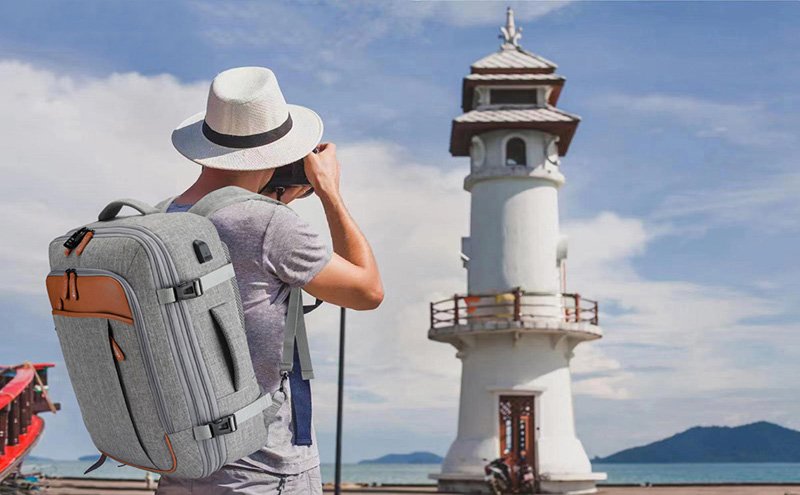
Travel backpacks are designed for those who travel frequently, whether it’s for business or leisure. These backpacks combine the convenience of a backpack with the functionality of a suitcase, often featuring dedicated compartments for clothing, electronics, and travel essentials.
Key Features:
- Capacity: Usually between 30L-50L for carry-on convenience, though some larger models exist.
- Laptop and Tablet Sleeves: Dedicated compartments to protect electronics.
- Organization: Several compartments to store clothes, toiletries, and accessories, similar to a rolling suitcase.
- Comfort: Padded straps and hip belts for even weight distribution during long periods of wear.
Popular Use: Perfect for frequent flyers, digital nomads, and people who prefer to travel light but still need to pack efficiently.
- Carry-On Travel Backpacks: Sized to fit overhead compartments and designed with several compartments for easy access to essentials.
- Hybrid Travel Backpacks: These can be carried as backpacks or converted into a duffel bag, providing flexibility for both travel and sightseeing.
4. Laptop Backpacks
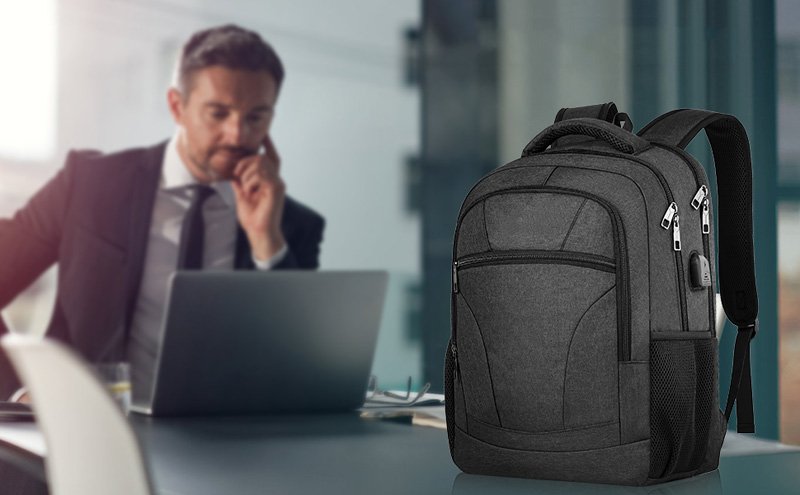
Laptop backpacks are specifically designed to protect your laptop or tablet while providing ample storage space for other essential items. These are often used by students, commuters, and professionals who carry their tech with them daily.
Key Features:
- Laptop Sleeve: A dedicated, padded compartment that securely holds your laptop.
- Organizational Pockets: Small pockets for chargers, pens, business cards, and other essentials.
- Lightweight Design: Most laptop backpacks are designed to be lightweight, prioritizing comfort for daily use.
- Durability: Often made from durable, water-resistant materials to protect electronics.
Popular Use: Ideal for students, remote workers, and anyone who needs to carry their laptop safely and securely.
- Simple Laptop Backpacks: A minimalist design with a laptop sleeve and a few compartments for essentials.
- Business Laptop Backpacks: Includes space for documents, a tablet, and other office supplies, along with a sleek, professional design.
5. Tactical Backpacks
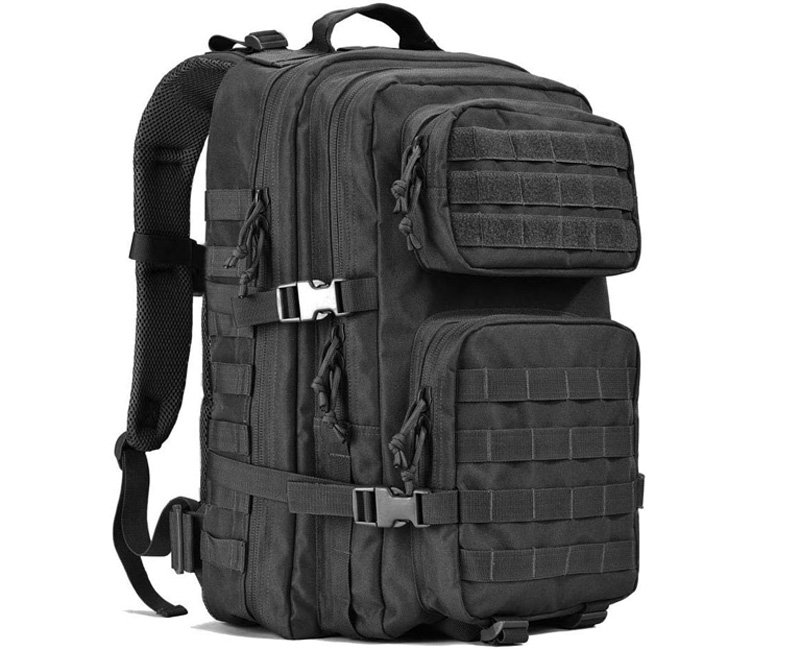
Tactical backpacks are built for military, law enforcement, and emergency response teams, but they have also gained popularity among outdoor enthusiasts and survivalists. These backpacks are designed to be tough, functional, and modular, with numerous pockets and attachment points for additional gear.
Key Features:
- MOLLE System: Modular attachment system that allows for customization and expansion by adding pouches and accessories.
- Heavy-Duty Construction: Made from durable, water-resistant materials like nylon or canvas.
- Multiple Compartments: Numerous pockets and compartments for carrying tools, first-aid kits, survival gear, and other necessities.
Popular Use: Military personnel, tactical teams, survivalists, and outdoor adventurers who need to carry a wide range of equipment.
- 3-Day Packs: Designed for multi-day operations or hikes, with space for food, water, and gear.
- Range Bags: Smaller tactical backpacks used for carrying firearms and accessories.
6. Diaper Backpacks
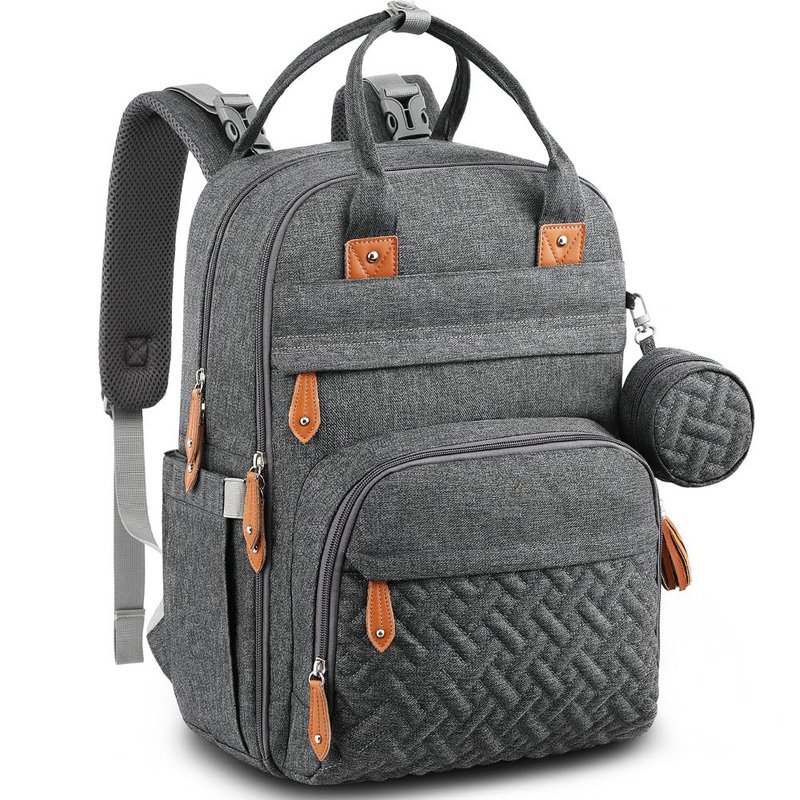
Designed for parents on the go, diaper backpacks make carrying baby essentials more organized and accessible. These backpacks are made with compartments specifically designed to hold diapers, wipes, bottles, and extra clothing.
Key Features:
- Baby-Specific Compartments: Sections for diapers, wipes, bottles, and even changing pads.
- Convenient Access: Pockets designed for easy access to baby items when on the move.
- Comfort: Ergonomically designed straps to make carrying more comfortable for parents.
Popular Use: Parents who need a hands-free, organized way to carry all of their baby’s essentials while on outings.
- Standard Diaper Bags: Backpack-style with various compartments for baby items.
- Fashionable Diaper Backpacks: Sleek, stylish designs that don’t look like traditional diaper bags.
7. Small Backpacks (Mini Backpacks)
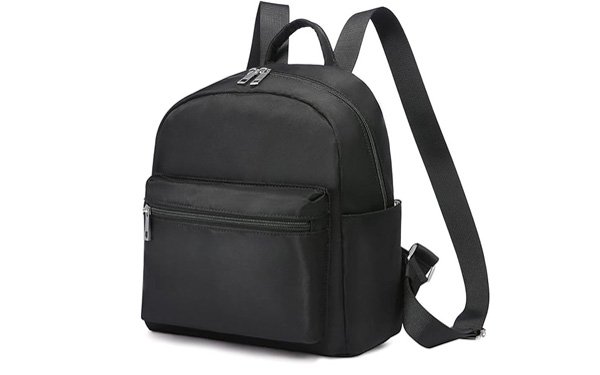
These backpacks are compact and lightweight, designed for minimalists who need just the essentials. Despite their small size, they’re still functional and stylish, often used as everyday carry (EDC) bags for those who don’t need to carry much.
Key Features:
- Compact Size: Typically ranges from 10L to 20L, ideal for carrying light essentials.
- Minimal Design: Simple design with just one or two main compartments.
- Versatility: Perfect for casual outings, concerts, or as an accessory.
Popular Use: Great for fashion-forward individuals, minimalists, or as a secondary bag for specific occasions.
- Miniature Backpacks: These are trendy bags that hold your phone, wallet, keys, and a few other small items.
- Convertible Mini Backpacks: Can be worn as both a backpack and a crossbody bag.
8. Roll-Top Backpacks
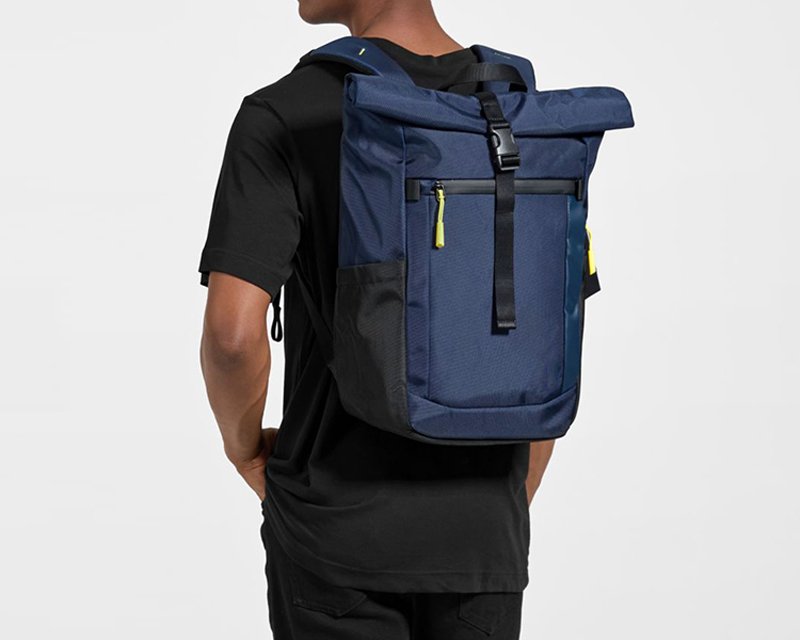
Why Do Backpacks Have Roll Tops?
The roll top backpack design is popular for outdoor enthusiasts and travelers. This design allows the user to adjust the size of the bag by rolling the top down, making it easier to secure a range of items while providing extra protection from the elements.
Roll top backpacks are designed for increased versatility and protection. The top can be rolled down to adjust the size of the bag, making it more secure and weather-resistant.
Roll-top backpacks are especially popular for hikers and bikers who need to keep their gear dry during rainy conditions. By rolling the top down tightly, it seals off the bag from moisture, ensuring your gear stays safe.
Key Features:
- Roll-Top Closure: Provides adjustable volume and a secure closure.
- Water Resistance: Many roll-top backpacks are made from waterproof materials, making them ideal for outdoor activities.
- Minimalist Look: Often designed with fewer compartments, focusing on the roll-top function and streamlined look.
Popular Use: Ideal for commuters, travelers, and cyclists who want a sleek, functional bag with room for extra gear when needed.
- Cycling Roll-Top Backpacks: Designed to carry cycling gear and essentials while maintaining a waterproof design.
- Urban Roll-Tops: Sleek, stylish backpacks for city dwellers who appreciate both function and fashion.
Why Backpacks Are Here to Stay
From ancient civilizations to modern-day schools and hiking trails, backpacks have proven to be more than just a simple bag,they’ve become a symbol of practicality, adventure, and convenience. Whether you’re a student, traveler, or outdoor enthusiast, the humble backpack will likely continue to be a go to tool for years to come.
Whether you’re looking to customize a backpack for school, work, or outdoor adventures, Szoneier is here to help!Contact us today to request a quote and start designing the perfect backpack for your project!






